
Director of Photography
A film about the outstanding Latvian film director Juris Podnieks, who during his lifetime gained the fame of a fighter for justice and an "eye-opener". Podnieks has created testimonies about the most important events of the twentieth century in the post-Soviet territory. He always saw a bigger picture, it was not just Latvia what interested him. His ability to cover such a wide spectrum of themes - wars, lost freedom of his own country, the Soviet regime and its collapse, young people, artists. But most importantly, he was always focusing on the human soul. Juris creates an emotional bond between the author and his characters, the characters and the viewer - he was talking to each individual. Perhaps this is why his films made such an effect on the viewer. Juris Podnieks has clearly been able to influence millions of viewers with his films. Juris himself died in the summer of 1992 in a diving accident. Did he manage to fulfill his mission in this life?
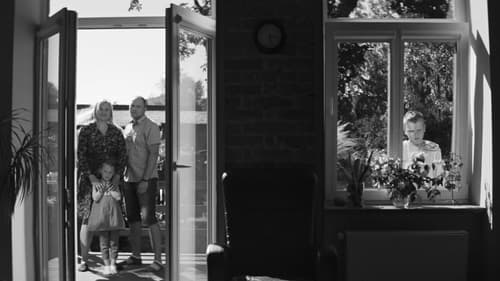
Director of Photography
The camera stands in a house, the lens pointing through the window, outdoors, where the occupants of the home are standing. They respond patiently to the camera operator’s directions: a small step to the left, a little bit forward, no, back just a bit, yes, that’s perfect. Dozens of people pose in this way for a full minute. There’s a man who lives alone, a large family, an older woman on a trampoline. Some are entirely at ease, others more self-conscious. Rabbits, dogs, and cats are allowed to join these portraits, too. All of them are captured within the natural frame of the windows, along with the lace or floral curtains.
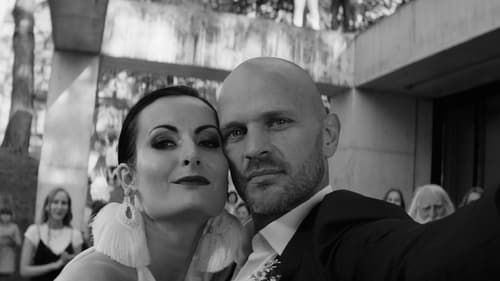
Camera Operator
A CrossFit trainer becomes the father of a baby girl, Snow White. Snow White’s mother dies, and her father marries a young woman obsessed with CrossFit and herself. She works out all the time in order to be the best. And she really is the best – she can do 50 burpees. In the meantime, little Snow White plays and grows up in the CrossFit gym. Time passes, and one day it turns out – while the Stepmother can do 50 burpees, Snow White can already do 53 burpees...

Director of Photography
The First Bridge is a film about frontiers, barriers, the ways to cross over and see what goes on, on the other side. But it also a film about time, as it was shot on Kodak Negative Films acquired in the year 1997 and discovered intact in 2018.

Cinematography
У Ансиса невинная профессия художника, и его услуги требуются всем режимам, быстро сменяющим друг друга начиная с 30-х годов прошлого века и заканчивая Второй мировой войной. Полные пафоса времена Улманиса, коммунистический и нацистский режимы, война и холокост... выдержат ли все это идеалы молодости и невинная любовь? За столь короткий срок Ансис совершает невероятное экзистанциональное путешествие, превращаясь из неловкого молодого человека в мужчину, способного на поступок.

Director of Photography
A film about a plastic spoon and a society that has reached a high level of development – oil is being retrieved from subterranean depths, transported to processing plants, turned into plastic, transported to another plant, where it acquires the shape of a spoon, transported to convenience stores, where we buy it, and is then soon tossed into the trash. In other words, this is a film about the efforts put into making a spoon that can be thrown away so effortlessly.
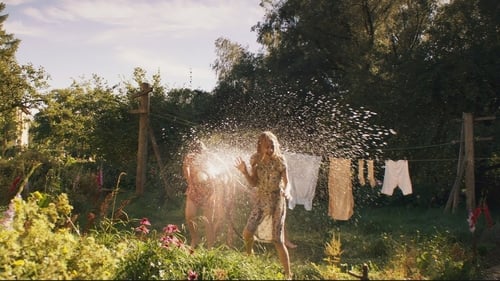
Director of Photography
Summer, 1989. City girls, Paula and Laura, spend their summer holidays in a small town with their cousins, Maija and Linda. Four girls, left unattended, enjoy freedom, imitate the life of adults, plunge into reckless adventures and get into trouble. Based on true events, nine-year-old Paula’s story of growing up is set against the background of time when Lat-via made her first steps towards independence.
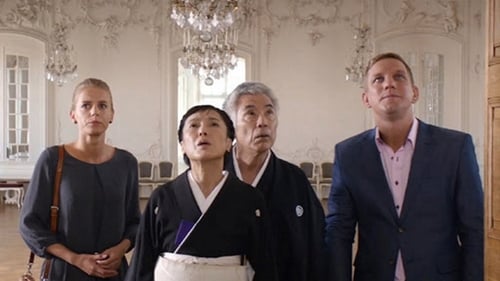
Director of Photography
“Magic Kimono” tells the story of middle-aged Japanese woman Keiko, who has been living in a shell for decades due to a family tragedy in Kobe. The modest act of eating and the sensations it gives us provided Keiko a lifeline to survive. Unwillingly, she joins a group of Japanese women traveling to Northern Europe to participate in a kimono show in the fairytale-like art nouveau world of Riga. During her performance, Keiko suddenly comes face to face with her husband, who disappeared twenty years ago and now wants to read-dress their relationship and who Keiko has become.

Camera Operator
A person’s face and eyes preserve experience better than any document or recorded memoir. Particularly if a person has experienced as much as the well-known dissident Lidija Lasmane-Doroņina. Actually, she does not even think of herself as a dissident. She received her three terms in prisons and labour camps – fourteen years in all – as punishment not for underground struggle but for daring to remain true to her principles, convictions and faith. The ideals Lidija obtained as a child – the idyllic image of Latvia as an independent country, strong family values and faith in God as a moral measuring stick for any action. Her eyes are bright even today, at the age of 91, and they look at this world full of life.

Director of Photography
Историческая картина воссоздает реалии одной из самых драматичных для Латвии эпох — масштабной массовой депортации 1941 года.
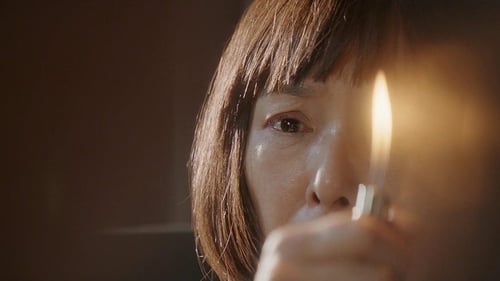
Director of Photography
Years after she related to him the story of her parents’ death in a fire, for which – rightly or wrongly – she feels responsible, Japanese psychiatrist Dr. Sanada meets his former patient Azusa once again. Back then, she lambasted him for being wrong for the job. Back then, he let slip that she isn’t actually crazy. Now she’s a prostitute living in precarious circumstances in Los Angeles and is accused of murder, with her memories once again moving inexorably towards a fire. Sanada assesses her in the presence of an investigator who appears not to understand Japanese. Is Azusa now mentally ill for real? Was she back then? And why does the description of her tormentors upset him so?

Director of Photography
Волевая молодая женщина состоит в браке с крупным землевладельцем. Но однажды она безответно влюбляется в наставника собственного сына.

Director of Photography
A story about a city built as a paradise but turned into hell – a city slowly turning into paradise again, just in a different way. Igor has been living in the Chernobyl Zone for almost ten years, for peace and a chance to escape modern civilization. Psychological issues, both personal and global, are still troubling him, and he embodies both harmonizing peace and supernatural stress. And an existential secret – the secret of the essence of life. He is surrounded by the elderly inhabitants of Chernobyl, living in villages entirely overcome by nature. They lead their unrealistic Atlantean lives, from which even war in Ukraine seems to be happening on another planet.

Director of Photography
Latgale is a land on the very eastern edge of the European Union. Sometimes it seems like a land in the middle of a body of water. At other times, it seems a desert with the ark of rescued humanity all covered by sand. The film presents a land that is made by people, spiritual and physical extremes of living and thoroughly Christian resurrection.

Director of Photography
Киноальманах состоит из 3-х новелл, объединенных мифом о Лилит, первой жене Адама, упоминаемой в древних преданиях Востока, в Талмуде, каббалистике Средневековья. Автор задумал фильм как эротическую притчу о вековечном противостоянии Человека и Матери-природы, ненасытной в своей жажде рождать и уничтожать. По легендам, Лилит была создана, как и Адам, из глины. В ссоре она покинула его, поэтому не запятнана первородным грехом и избежала проклятия. У нее нет души, она бессмертна. Она принимает любой облик, овладевает мужчинами против их воли и покидает, когда захочет, обрекая их на тоску и погибель. Что бы она ни делала, это не является ни Добром, ни Злом. Она — другого естества…

Director of Photography
One week in one of the most exotic and picturesque cities of the world. The day of changes comes when Amaya meets a charming Englishman, Paul and it dramatically changes Amaya's perception of her cultural and personal identity.

Director of Photography
A creative a portrait of Latvian luger and Olympic medal winner, Martins Rubenis, who won the first Latvia's Winter Olympic medal of the games in Turin in 2006. Apart from his success in sports, in the circles of contemporary alternative culture he is known as DJ Betons from the association Varka Kru (Varka – from Russian "boiling", Kru – from English "crew"). Like the medieval knight Lohengrin, Martins Rubenis arrives in his luge to fight a battle - with an adversary, with himself, with time and the world.

Director of Photography
There should be silence in a museum. And someone should see to it that the silence is there. It's the logical order of things. However, it might seem weird to somebody.

Camera Operator
A man in a grey coat roams the city. He is interested in boys and men. Those good enough for him will get a green bag. Marija is home alone. She is the only woman to get a green bag. But the film does not end quite there.

Director of Photography
A mentally ill young woman Valda convinces herself that a boy growing up in an orphanage is her child. Following the footsteps of a thousands Lithuanians, she immigrates to Ireland to earn money to save him. "Loss" portrays the beauty and tragedy of the human heart.

Director of Photography
17-year-old Ria is a sensitive and mysterious young woman. Ria's mother has suffered in a car accident and has stopped speaking since her daughter's birth. The family grows deer for sale, yet, the business is not successful. To earn some money, her father decides to organize a hunt.
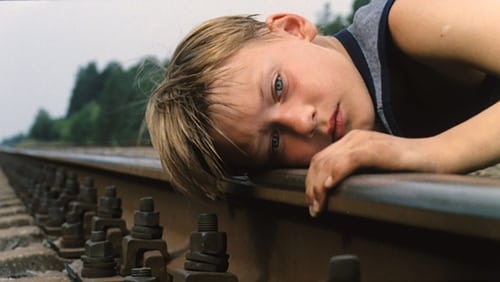
Director of Photography
Four directors capture simple, yet quintessential experiences of a single individual in different periods of his life - childhood, adolescence, adulthood and old age.

Director of Photography
Even before Marija was born it was clear that she would be a person getting in trouble all the time. However, that’s not all. The most important thing is that she is often alongside firemen. Is it because things around her catch fire?

Director of Photography
Maria decides to go for a swim in the pool even though it looks deserted and she’s warned that the water is cold. When she gets into the pool she is faced with not only the frigid water, but with her other feelings as well. Like fear.

Director of Photography
In the near future of 2012, the government asks for each citizen to have 30 Lats on their credit card. Anybody not having this amount of money is deemed to be maliciously poor and arrested.

Director of Photography
Viesturs Kairišs’ 2004 documentary The Monument investigates the interpretation of Riga’s Soviet Second World War memorial in the post-Soviet era. The "Victory Monument" was established by the Soviets to celebrate freeing Latvia from Nazi Germany. However, for Latvians, this didn't mean "freedom", it meant the beginning of another occupation of their country - this time, by Soviet Union.
Included in the collection "Europe's old new faces : Ten countries, ten young directors. Ten stories about monuments situated somewhere between yesterday and tomorrow".

Director of Photography
An emotional and stylistically consistent documentary musical depicting the staging of Bernstein’s West Side Story with deaf youths. The dramatic material is intertwined with life and the emotional scenes of the musical; it creates a distinctive choreography, which is a statement of the deaf people’s craving to love this world and to be open. Reciting to music, which is the way of singing of the deaf, is the strongest and most unexpected witness of the realities of their world.

Director of Photography
An absurdist farce centering around a school in post-Soviet Latvia. After a rather disgusting prank (someone defecates in the school attic), the tyrannical headmistress deems that no one can leave until the culprit is caught. When the photographer's pet python escapes, havok breaks loose.

Director of Photography
It is what it is. One needs a reason to get a passer-by to stop in their tracks and stand in front of the camera for a while. In this case the reason was - Mozart.

Director of Photography
A historical drama about an attempt to steal the entire Latvian national wealth deposited abroad by Wilhelms Munters, the Latvian Foreign Minister in the forties.

Director of Photography
Every night, Soviet tractors comb the coast of Latvia looking for signs of anyone who could have infiltrated the Soviet border from the sea. One morning, three Soviet patrolmen discover a woman’s shoe in the sand and footsteps leading to the quaint little village of Liepaja.

Director of Photography
An omnibus film consisting of ten parts, each directed by a different young director from the Latvian Academy of Culture. The unifying element of the ten shorts is the place where they take place - the airport. A lot can happen there - including a strike by a comet, a malicious attempt to break havoc by passengers, or an exploration of the old airport guard's house where not a lot has changed since the collapse of the Soviet Union. The film consists of the following parts: A Mishap (Nediena) by Arta Biseniece, Blurp (Šļurp) by Aija Bley, Alien Sky (Svešās debesis) by Viesturs Kairišs, 5 Versions (5 versijas) by Dzintars Krūmiņš, Comet (Komēta) by Māra Liniņa, Cleptomania (Kleptomānija) by Andis Mizišs, Alfredo's Poetry (Alfredo dzeja) by Igors Varenieks, Little Hand (Mazā roka) by Ilze Vidauska, Comet 2 (Komēta 2) by Anna Viduleja, and Life No. 2 (Dzīve nr.2) by Kristīne Želve.

Director of Photography
The oak tree in Seja is roughly 700 years old. Around this monumental tree, the peaceful and repetitive life goes on in the village, a group of houses in the middle of the forest. It is an almost unworldly existence in a condition of absolute simplicity where people are grateful for a hot cup of coffee and a good potato harvest.

Director of Photography

Director of Photography
The morning begins when the mail is delivered - this has been a tradition for almost an eternity. This film looks at daily things, daily movements, daily life and the daily routines of the postman, which are nevertheless meaningful to those who await and receive newspapers and letters.

Director of Photography
The ferry crosses the river, transporting people from one shore to the other, from one country to another. It runs year round, never stopping. The footage was filmed on the Latvian-Belarussian border in the early 1990s - a time when the Soviet Union began to crumble and Latvia regained its independence.

Director of Photography
Erik lives by night. He works in a nightclub and occasionally dresses up as a woman to rob rich clients. One day Erik's father arrives uninvited. It's a surprise visit that brings out memories of complicated childhood.

Director of Photography

Director of Photography

Director of Photography

Director of Photography

Director of Photography
A subdued observation of daily life in a children's hospital. The driver of a delivery van regularly delivers clean linen to the wards where small, tense dramas of life and death are played out.

Karlens
Действие фильма происходит на рижской окраине, в Гризинькалнсе, одном из рабочих районов, сразу после революции 1905 года. Ребята Вороньей улицы, чьи отцы трудятся на ближайших заводах и фабриках, противостоят «Империи Тулиана» - группе мальчишек, детей лавочников, с соседней улицы Лауку. Случайно в руках «республиканцев» оказался саквояж, отданный им на сохранение незнакомцем, уходившем от погони. В нём ребята нашли красный флаг, листовки и тяжёлый железный ящик, закрытый на ключ. Это всё принадлежало подпольщикам, которых Лурих и Янка приняли за агентов охранки. О тайной находке стало известно Тулиану. За горсть конфет он сумел завладеть саквояжем, который с большими усилиями пришлось возвращать обратно. В ящике был спрятан наборный типографский шрифт, который через циркачей, связанных с подпольем, был отдан владельцам. Полиции удалось напасть на след и арестовать несколько человек, но основной группе удалось бежать.





































